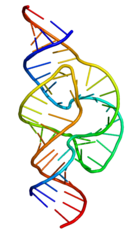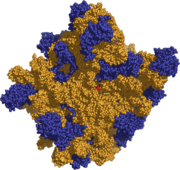There are many ways in which human stem cells can be used in basic research and in clinical research. However, there are many technical hurdles between the promise of stem cells and the realization of these uses, which will only be overcome by continued intensive stem cell research.
Studies of human embryonic stem cells may yield information about the complex events that occur during human development. A primary goal of this work is to identify how undifferentiated stem cells become differentiated. Scientists know that turning genes on and off is central to this process. Some of the most serious medical conditions, such as cancer and birth defects, are due to abnormal cell division and differentiation. A better understanding of the genetic and molecular controls of these processes may yield information about how such diseases arise and suggest new strategies for therapy. A significant hurdle to this use and most uses of stem cells is that scientists do not yet fully understand the signals that turn specific genes on and off to influence the differentiation of the stem cell.
Human stem cells could also be used to test new drugs. For example, new medications could be tested for safety on differentiated cells generated from human pluripotent cell lines. Other kinds of cell lines are already used in this way. Cancer cell lines, for example, are used to screen potential anti-tumor drugs. But, the availability of pluripotent stem cells would allow drug testing in a wider range of cell types. However, to screen drugs effectively, the conditions must be identical when comparing different drugs. Therefore, scientists will have to be able to precisely control the differentiation of stem cells into the specific cell type on which drugs will be tested. Current knowledge of the signals controlling differentiation fall well short of being able to mimic these conditions precisely to consistently have identical differentiated cells for each drug being tested.
Perhaps the most important potential application of human stem cells is the generation of cells and tissues that could be used for cell-based therapies. Today, donated organs and tissues are often used to replace ailing or destroyed tissue, but the need for transplantable tissues and organs far outweighs the available supply. Stem cells, directed to differentiate into specific cell types, offer the possibility of a renewable source of replacement cells and tissues to treat diseases including Parkinson's and Alzheimer's diseases, spinal cord injury, stroke, burns, heart disease, diabetes, osteoarthritis, and rheumatoid arthritis.

Figure 4. Heart muscle repair with adult stem cells. Click here for larger image.
For example, it may become possible to generate healthy heart muscle cells in the laboratory and then transplant those cells into patients with chronic heart disease. Preliminary research in mice and other animals indicates that bone marrow stem cells, transplanted into a damaged heart, can generate heart muscle cells and successfully repopulate the heart tissue. Other recent studies in cell culture systems indicate that it may be possible to direct the differentiation of embryonic stem cells or adult bone marrow cells into heart muscle cells (Figure 4).
In people who suffer from type I diabetes, the cells of the pancreas that normally produce insulin are destroyed by the patient's own immune system. New studies indicate that it may be possible to direct the differentiation of human embryonic stem cells in cell culture to form insulin-producing cells that eventually could be used in transplantation therapy for diabetics.
To realize the promise of novel cell-based therapies for such pervasive and debilitating diseases, scientists must be able to easily and reproducibly manipulate stem cells so that they possess the necessary characteristics for successful differentiation, transplantation and engraftment. The following is a list of steps in successful cell-based treatments that scientists will have to learn to precisely control to bring such treatments to the clinic. To be useful for transplant purposes, stem cells must be reproducibly made to:
- Proliferate extensively and generate sufficient quantities of tissue.
- Differentiate into the desired cell type(s).
- Survive in the recipient after transplant.
- Integrate into the surrounding tissue after transplant.
- Function appropriately for the duration of the recipient's life.
- Avoid harming the recipient in any way.
Also, to avoid the problem of immune rejection, scientists are experimenting with different research strategies to generate tissues that will not be rejected.
To summarize, the promise of stem cell therapies is an exciting one, but significant technical hurdles remain that will only be overcome through years of intensive research.
http://stemcells.nih.gov/info/basics/basics6.asp






































